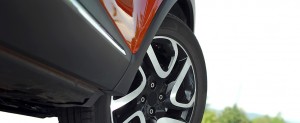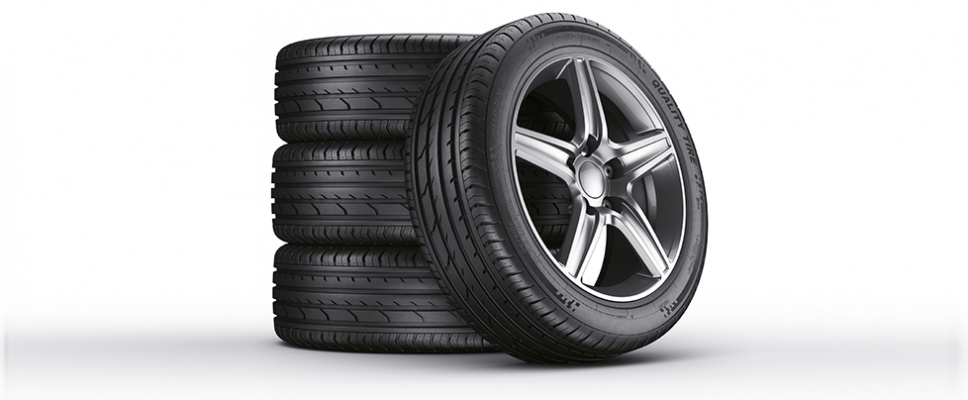Tires
A tire is a circular vehicle component which helps provide traction between the road and the vehicle while also absorbing shock. It covers the wheel’s rim, which not only protects it, but also enables better vehicle performance. The majority of tires are inflatable structures, which are inflated with compressed air. Pneumatic tires are used on most types of vehicles, such as cars, while metal tires are used on railcars and locomotives and rubber tires are used on non-automotive applications like wheelbarrows and lawnmowers.
Brands
There are many brands of tires available, but Michelin, Goodyear,  and Bridgestone are usually the top brands of tires sold in the world. Bridgestone, along with Firestone (which it also markets and manufactures), supplies tires for most vehicles in the United States, and often scores extremely well on performance tests. Founded in 1891, Michelin is another popular brand, which also performs very well on performance tests and offers numerous models. It is the company that first introduced the radial tire.
and Bridgestone are usually the top brands of tires sold in the world. Bridgestone, along with Firestone (which it also markets and manufactures), supplies tires for most vehicles in the United States, and often scores extremely well on performance tests. Founded in 1891, Michelin is another popular brand, which also performs very well on performance tests and offers numerous models. It is the company that first introduced the radial tire.
Safety
Tires are built and designed with great care, but for maximum performance they must be maintained properly. The most important factors in tire safety are proper tire repair, regular inspection, regular tire rotation, proper inflation pressure, and proper tire size and load capacity. Overloading a tire, or under-inflation and damage may result in tire failure which can lead to an accident. It is always recommended that you replace all four tires at the same time to optimize vehicle performance. If replacing only one tire is unavoidable, it is recommended that you pair the brand new tire with the tire that has the deepest tread, and make sure both are on the rear axle.
Benefits
The biggest benefit to replacing your tires is safety. A new set of tires should provide a cushion of safety for the next 100,000 miles of the vehicle’s life. New tires also help increase performance. The distance it takes for your car to come to a stop depends on the quality of your tires. This improved traction can also allow your tires to perform in different types of weather and road conditions, which is beneficial for people who live in areas of the world where the weather can sometimes be extreme. New tires can also help improve your gas mileage.
a cushion of safety for the next 100,000 miles of the vehicle’s life. New tires also help increase performance. The distance it takes for your car to come to a stop depends on the quality of your tires. This improved traction can also allow your tires to perform in different types of weather and road conditions, which is beneficial for people who live in areas of the world where the weather can sometimes be extreme. New tires can also help improve your gas mileage.
Drawbacks
There are really no drawbacks to replacing your tires. It is relatively cheap, and significantly improves your car’s performance and safety. It can be tricky, however, when replacing only one or two tires. It is recommended to replace all four tires at once to optimize your car’s performance. New tires provide better grip, and having different tires with different grip levels can sometimes be a safety hazard. If it can’t be avoided, however, it is recommended that you place the new tires on the rear axle.
Cost
The cost of tires varies depending on the type of tire. For a set of Bridgestone tires, you can be expect to pay around $400 for the tires, and then another $300 for other maintenance, such as mounting and balancing and alignment. It is estimated that you will pay anywhere between $13 and $45 per tire for balancing, and around $100 for alignment, which is strongly recommended when purchasing new tires.
you can be expect to pay around $400 for the tires, and then another $300 for other maintenance, such as mounting and balancing and alignment. It is estimated that you will pay anywhere between $13 and $45 per tire for balancing, and around $100 for alignment, which is strongly recommended when purchasing new tires.
